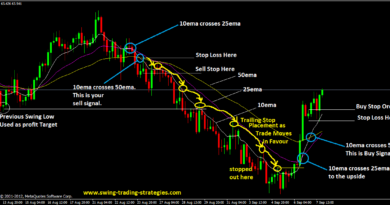What Factors Determine Your Gold Loan Value in India Today?
In recent years, gold loans have emerged as a popular financial solution for many individuals needing instant liquidity in India. Given the cultural and economic significance of gold in Indian households, leveraging it for financial requirements makes sense. However, determining your gold loan value is more complex than one might think. Various factors influence how much money you can borrow against your gold, making it crucial for potential borrowers to understand these dynamics thoroughly.
Understanding Gold Loan Value
The gold loan value is essentially the amount of money you can borrow from a financial institution by pledging your gold. The loan amount is determined based on several criteria, with financial institutions setting parameters to evaluate the value of your pledged gold. With interest rates typically ranging from 7% to 15%, gold loans have become an attractive financial option due to their lower interest rates compared to personal loans and credit cards.
Key Factors Influencing Your Gold Loan Value
1. Purity of Gold:
The most significant factor impacting your gold loan value is the purity of the gold you offer as collateral. In India, gold’s purity is measured in karats. Most lenders accept gold with a purity ranging from 18K to 22K. The purer the gold, the higher its market value, thus enhancing the potential loan amount. Lenders generally do not accept gold below 18K for gold loans, as the value and liquidity of such gold are comparatively lower.
2. Gold Weight:
The weight of your gold ornaments or coins directly impacts the loan amount. Simply put, the heavier the gold, the higher the gold loan value. However, it is essential to note that only the actual weight of the gold is considered, excluding any embellishments like stones or non-gold components. Jewelers often use these extras, but when calculating the loan amount, financial institutions only consider the pure gold content.
3. Current Market Gold Price:
Gold prices fluctuate daily based on various factors, including international gold rates, currency value, and economic conditions. The prevailing market rate of gold is crucial when determining the gold loan value. Financial institutions refer to the current market value to calculate the loan-to-value ratio (LTV), which indicates how much you can borrow against your gold. The Reserve Bank of India (RBI) allows lenders to offer up to 75% of the gold’s market value as a loan.
4. Loan-to-Value (LTV) Ratio:
The LTV ratio determines the percentage of the gold’s current market value that the lender is willing to offer as a loan. Though the RBI has capped the LTV at 75%, some lenders might offer a lower percentage depending on their risk assessment and policies. A higher LTV ratio usually means you can borrow more money against your gold. However, it is vital to be cautious; higher LTV ratios might come with increased interest rates and stricter repayment terms.
5. Condition and Form of Gold:
The condition of your gold ornaments or coins can influence the loan amount. Lenders typically prefer gold in good condition. Furthermore, while gold coins and biscuits might fetch a higher loan value due to their standard weight and purity, jewelleries are often subject to detailed scrutiny due to potential adulterations and impurities.
6. Geographical Factors:
Interestingly, regional differences can influence the gold loan value. For instance, the gold loan in Maharashtra might differ in terms from other states due to varying administrative costs, regional taxes, and operational charges. Such geographical influences necessitate potential borrowers to thoroughly research and compare different lenders within their locality.
7. Transaction and Processing Fees:
Although not a direct determinant of the gold loan value, transaction fees, processing fees, and administrative charges effectively reduce the net amount you receive from the lender. These additional costs vary among institutions, and some banks might waive or discount these fees as part of promotional offers.
Choosing the Right Lender
When considering a gold loan, it’s imperative to choose the right lender. Public sector banks, private banks, and non-banking financial companies (NBFCs) offer gold loans in India. Each comes with its set of terms and conditions. While banks may provide lower interest rates, NBFCs could be more flexible with their loan conditions and deliver faster processing times. Specifically for a gold loan in Maharashtra, numerous local lenders also offer competitive rates owing to the state’s substantial market for gold-related financial products.
Conclusion
Understanding the factors that determine your gold loan value is essential for anyone considering such a financial option. It involves more than merely owning gold; the purity, weight, current market price, LTV ratio, and geographical factors all play significant roles in determining the loan amount. Armed with this knowledge, individuals in need of quick funds can make informed decisions that align with their financial needs and capacities.
In a world where financial equilibrium can sometimes be precarious, gold loans provide a strong foundation to stand on, allowing you to unlock the potential of your dormant assets efficiently and effectively. Whether opting for a gold loan in Maharashtra or any part of India, understanding these determinants assures borrowers of a fair, transparent, and optimized loan process.




